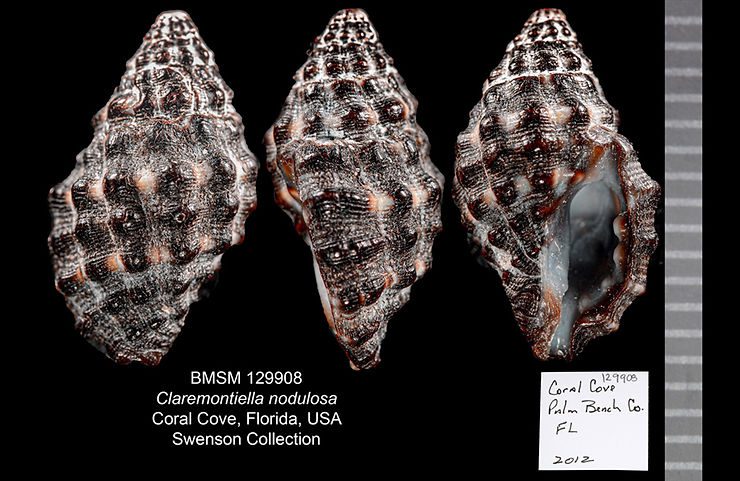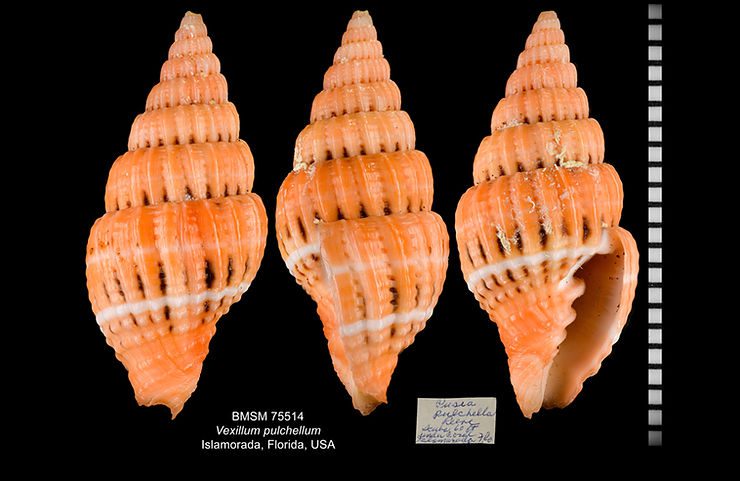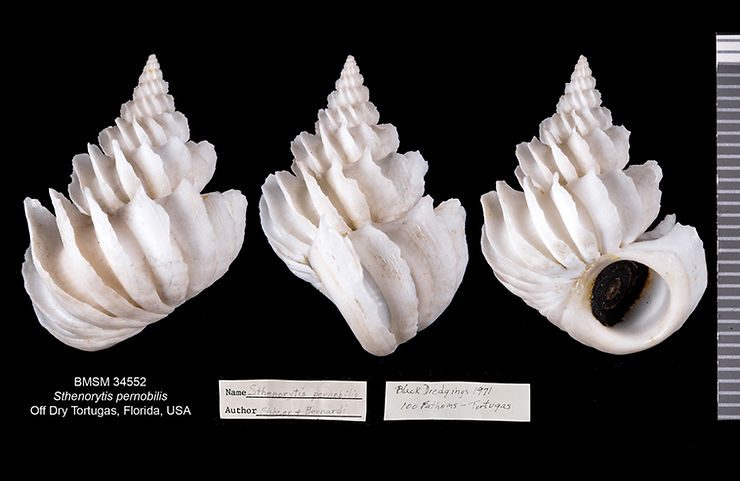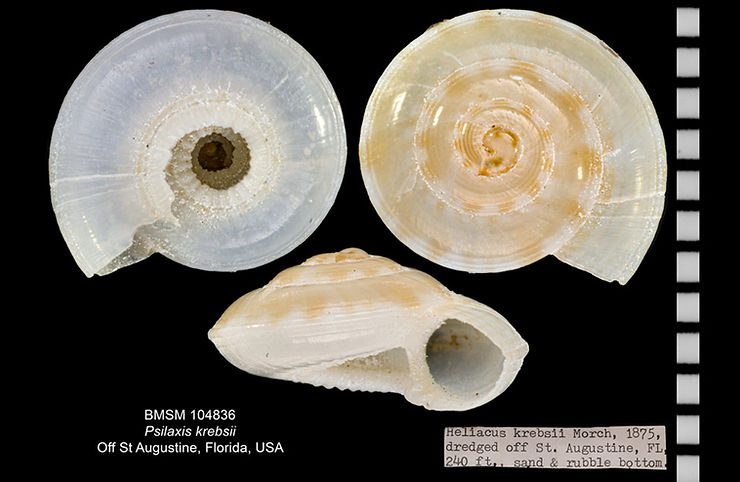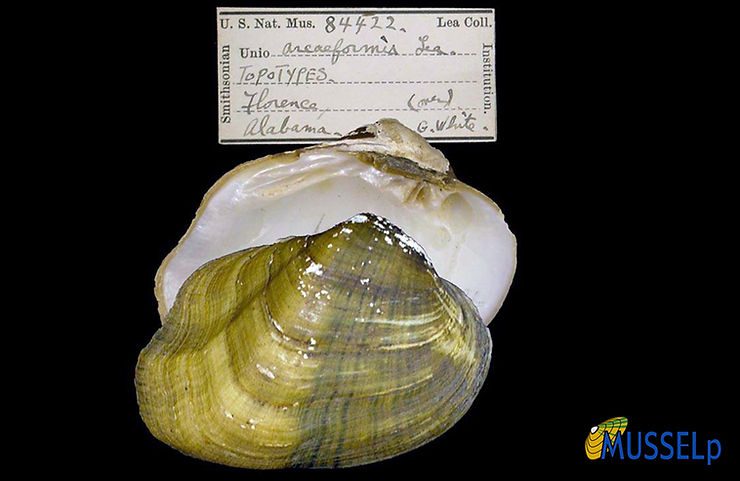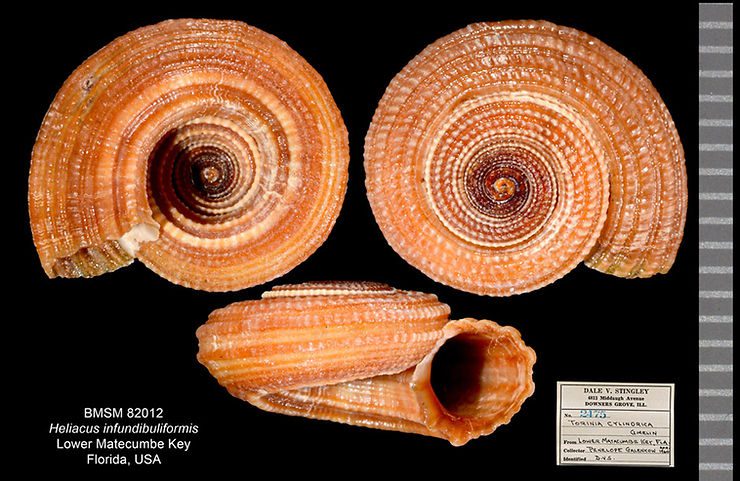
Shell of the Week: The Common Violet Snail
Janthina janthina (Linnaeus, 1758) measures up to 38 mm (about 1.5 inches) in height. The species is a member of the open-water, surface-dwelling community known as the neuston. Violet snails drift on the ocean surface using a raft of bubbles, feeding on other members of the neuston community such as the hydrozoans By-the-Wind-Sailor (Velella velella) and the Blue Button (Porpita porpita). The snail’s dependence on a raft of bubbles affects its posture on the water: they rest upside-down on the


